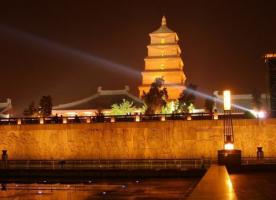New Silk Road Highlights China's Two-speed Reform Route for Economics
China's dream to revive a 2,000-year old trade route is emblematic of the country's two-speed reform process, according to Barclays.
The legendary Silk Road, named after the lucrative Chinese silk business, spanned three continents until the end of the 14th century. Now, China is spearheading an effort to recreate those trade networks in a project called The New Silk Road.
Comprised of a land-based Economic Belt that will snake through Central and West Asia and a Maritime Silk Road that will link South Asian ports, the initiative is one of many plans to open up China's economy and exercise its influence on the global agenda. Other examples include the recently-launched Stock Connect program and the BRICS-focused New Development Bank.
China's stock market cracks open "The fast progress in these regional initiatives compared with the relatively slow motion in domestic reforms highlights the contrasting economic circumstances facing China domestically and abroad," said Jian Chang, chief China economist at Barclays, in a report.
As Beijing experiences its slowest pace of growth in five years, experts complain that officials aren't doing enough to speed up structural reforms that are desperately needed to transition the economy away from exports. These include social measures such as boosting job creation to fiscal programs like tax relief for small and medium-sized enterprises (SMEs).
Chang calls the current stage of domestic reforms "a zero-sum game," due to resistance from vested interests amid the anti-corruption drive and ideological divides.
The New Silk Road is set offer a raft of business deals in the infrastructure and manufacturing sectors and the way officials deal between state and private sectors in this process will be crucial for reforms, according to Barclays.
"Unless carefully regulated, government-led global initiatives [such as the New Silk Road] could strengthen the role of the state sector, but we believe they should encourage a level playing field and support private enterprises," the report said.
Read MoreAustralia-China to sign free trade deal. Indeed, state-owned enterprises (SOEs) are widely expected to receive the most opportunities, judging by the deals announced thus far. China National Petroleum Corporation (CNPC) is leading the construction of a Central Asian gas pipeline, while China Communications Construction Company (CCCC) is building various ports throughout the Indo-Pacific region.
The projects involve central planning so a large share of the pie will be awarded to SOEs with experience in building infrastructure, said Dariusz Kowalczyk, senior economist and strategist at Credit Agricole.
Global investors await a major overhaul of Chinese SOEs, widely regarded as the most critical reform area, after President Xi called for measures to improve their efficiency and profitability in 2013.
However, Kowalczyk says the New Silk Road is unlikely to impact SOE reform.
On the bright side, he expects it to increase internationalization of the renminbi.
Most of the funding for business deals is expected to come from two financial mechanisms: A $40 billion New Silk Road fund and a $50 billion Asian Infrastructure Investment Bank (AIIB), both spearheaded by China this year.
It's possible that loans from these facilities will be denominated in renminbi, Kowalczyk said. "Expanding credit to foreign-based projects should definitely boost general acceptance of the currency in those countries."
Nyshka ChandranAssistant Producer, CNBC Asia-Pacific














